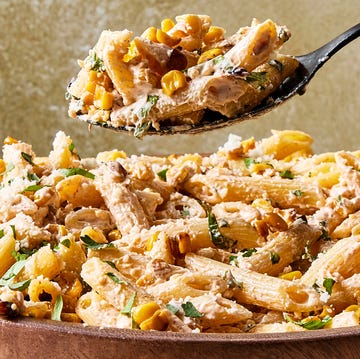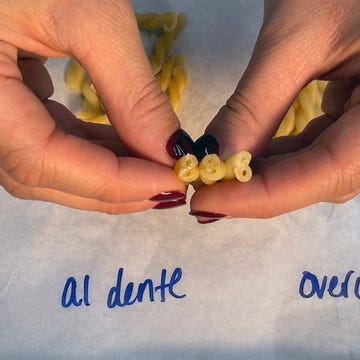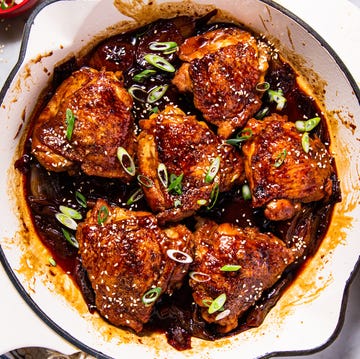Dumpling Variations
Made This?
Let us know how it went in the comments below!

I absolutely love dumplings. In all their shapes, sizes, and forms, I am a huge fan of anything packaged in a chewy or tender dough. And there’s a special place in my heart for soup dumplings. I hope I have done this recipe justice for anyone who’s up to the challenge of making the dumplings themselves at home. Xiaolongbao are a form of Chinese dumpling, or “buns,” filled typically with ground pork and a homemade pork broth. Often they’re steamed in a bamboo steamer, which is how I prepare them here. If you've always wanted to try making these dumplings at home, keep reading on for more of my top tips on how to ace them.
• Broth: Because pork broth isn’t common to find on the shelves of most grocery stores, I used chicken bone broth, enhanced it with ginger, garlic, and Chinese soy sauce, and added gelatin. I wanted to use a commercial bone broth since this isn’t a homemade “bone broth”; however, any broth or stock will do just fine. Chinese soy sauce can be either light or dark. The light is not “lower in sodium,” rather it’s the one most commonly used, thinner, and lighter in appearance than the darker version. The key component of the shortcut is adding gelatin. But if you find really hearty pork bone broth, chicken broth, turkey broth, or beef broth at a local butcher or specialty market, I encourage you to use it. The better the quality of the product, the better the dumpling will taste.
• Wrappers: You only need two ingredients to make the wrappers: all-purpose flour and water. Because I’m steaming the dumplings, I’m adding very hot water to the flour, which will create a softer, more pliable dough that’s perfect for steaming dumplings. If I was boiling dumplings, I would add cold water, which would create a dough with more elastic.
• Pork Filling: These dumplings are usually made with ground pork, but sometimes are a combination of ground pork and crab. I went with just pork here, seasoning it with scallions, Chinese light soy sauce, Shaoxing rice wine, garlic, ginger, and white pepper. Shaoxing rice wine is used in countless Chinese dishes, and adds a nice round and dry savoriness. White pepper has a slightly different spice compared to black pepper, and adds some funky, floral vibes to the mix.
• Napa Cabbage: Typically you would line your steamer with parchment paper, but I like to line it with Napa cabbage leaves. It’s better for the environment, delicious, and adds a bit of flavor to the dumplings.
First, we’re going to prepare our soup component (the star of the show). Add your broth to a pot, then toss in your aromatics: sliced ginger, smashed garlic cloves, and a bit of soy sauce. Whisk everything together over medium high heat, then let that go until reduced slightly. It doesn’t need to be syrupy, just reduced a bit so the flavors can intensify.
After it has reduced, remove the ginger and garlic, then get out your gelatine. Take the pot off the heat, add the gelatine, and whisk nicely until well combined. Then, transfer it all to a shallow baking dish and cover with plastic wrap. This will need to set in the fridge for at least 30 minutes, you can even let it set overnight if you want to prep this the night before.
These wrappers have very few ingredients (only 2!), and come together pretty easily. If you don’t have a stand mixer you can do this with your hands, but it will take a little bit longer. Add all purpose flour, then hot water to the mixer. It doesn’t have to be boiling, but it should be fairly hot. Hot water will create a supple dough that is easy to roll out. Beat the dough and water together until it is soft and smooth with a bit of springback. Cover it in plastic wrap, and set it aside for 30 minutes to an hour while we make our filling
Even though our pork is already ground, I like to use a food processor for the filling. It will not only process all of our other ingredients, but will slightly overwork the meat. Stay with me here, I know that sounds not-ideal. But, we’re looking for the bouncy texture that the food processor will give to the ground pork. Add all of your ingredients, then pulse everything together until it is nice and combined.
Now we can add our soup to the filling. Slice the set-up broth into cubes, then fold the cubes into the mixture. You want to distribute it equally, but avoid breaking up the cubes too much—we want to ensure there is soup in every bite.
Now that our filling is ready, we can get our wrappers ready. Get the dough out onto a lightly floured surface, and divide it into 4 equal pieces. Roll it out until it is as thin as you can go, 1/16” is what you’re looking for. Then, you’ve got a few options for how to make your rounds. An easy hack for making perfect rounds is to use a 4” cookie cutter. But, if you want to go the more traditional route, take off a little piece of dough, then roll that piece into its own little baby round. It’s a bit harder to form into that perfect circle, but you have more control, and the resulting dumpling is a bit better. If you want to give yourself a challenge, go for it!
Set up a station for filling your wrappers. Here’s a tip that’s not in the recipe but I’ve found to be very helpful: Use a small wooden dowel or flat rolling pin, and take the edges and roll them out. This ensures that the top doesn’t taste super doughy, and makes the dumpling easier to pleat. Once that is done, add a scoop of your filling, making sure you get cubes of the soup in it, and pleat. Work from the edge, and do little folds, one over the other until you get 16. Fold one over the other, leaving a little hole in the middle so the steam can escape as they cook in the steamer. Pull up the end of it, and you’ll have a cute coin purse dumpling! Typically these will look better after you cook them, so no stress if they aren’t perfect. Repeat with every dumpling. When you finish with each one, place under a damp towel so that they don’t dry out.
Now, let’s get to steaming. You can put your bamboo steaming basket over a wok if it fits, but if you have a smaller basket, you can place it over a smaller saucepan. Line your steaming basket with Napa cabbage, creating full coverage on the bottom. Two overlapping should be good, and keep in mind that they wilt. Then, add as many dumplings as you can into the steamer without having them touch. Steam for 10-13 minutes, until they are plump, firm, and slightly transparent.
When it comes to eating these dumplings, you've got a couple options for releasing the soup. Poke with a chopstick, or if you're feeling a bit more wild, take a small bite with your teeth to release the soup, then drink all of that goodness up before eating the rest of your dumpling.
Full list of ingredients and directions can be found in the recipe below.
If you’re not ready to cook the entire batch, that’s fine. Make a half batch or full batch, freeze in one layer on a sheet tray, then store them in gallon-size bags and return to the freezer for up to 2 weeks for best quality. Pull them out wherever you’re ready for dumpling goodness!
chicken bone broth
Chinese light soy sauce
(2") piece ginger, sliced
cloves garlic, smashed
(1/4-oz.) package gelatin
(480 g.) all-purpose flour, plus more for dusting
hot water
ground pork
scallions, sliced
Chinese light soy sauce
Shaoxing rice wine
grated garlic
finely grated peeled ginger
ground white pepper
kosher salt (optional)
head of Napa cabbage
Chinese black vinegar and chili oil, for dipping
Let us know how it went in the comments below!

60 Summer Potluck Recipes

How To Cook Pasta Perfectly Al Dente

Weeknight Dinners For July

Braised Chicken Thighs